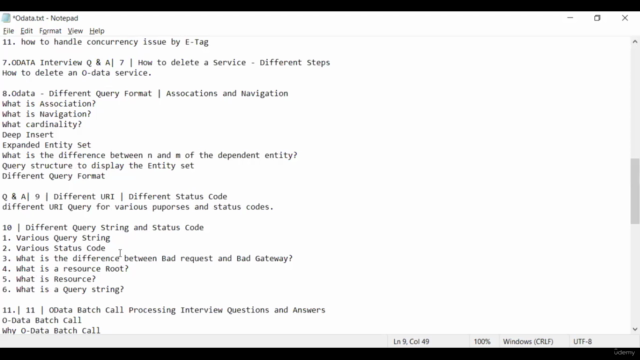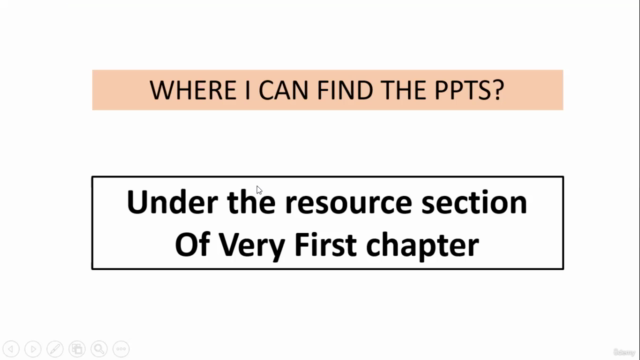ABAP ON HANA Interview Question's Answer Made Easy

Why take this course?
-
Important T-Codes for Performance Monitoring:
- ST06 (Performance Trace)
- ST04 (Real-Time Workload and Performance Overview)
- SM50/SM51 (System Logs and Monitors)
- SQ02 (Run SQL Statements)
- SE38 (Develop Programs)
- SRMI_MONITOR (Smart Business API for monitoring)
- SV-BB-PERF (Business Suite Performance Analysis)
-
SQL Inbuilt Functions:
- AGGREGATE functions (SUM, AVG, MIN, MAX, COUNT, etc.)
- WINDOW functions (ROW_NUMBER(), RANK(), DENSE_RANK(), etc.)
- String manipulation functions (SUBSTR, CONCAT, LPAD, etc.)
- Date and time functions (CURRENT_DATE, ADD_DAYS, EXTRACT, etc.)
-
Transparent Optimization in S4HANA:
Transparent optimization is a feature in S4HANA that automatically analyzes SQL statements and optimizes them for better performance without requiring changes to the application code.
-
EPM Model (Enterprise Performance Management Model):
The EPM model is used for planning, budgeting, forecasting, and other financial tasks within an organization. It helps in understanding the company's performance across various dimensions.
-
Schema in SAP HANA:
A schema is a namespace for data objects in SAP HANA. Each schema contains database objects like tables, views, functions, and calculated columns that are part of an information model. The standard naming convention for schemas is "SAP + SYSTEM NAME".
-
Different Types of Engines Corresponding to Different Information Models:
- Core Data Services (CDS) for Business Suite
- HANA SQL engine for transactional and analytical queries
- SAP HANA Calculation Layer for complex calculations and analytics
-
Attribute View, Analytical View, and Calculation View:
- Attribute View: Provides the data model for defining business objects and their attributes.
- Analytical View: Allows users to define and store analytical queries so that they can be executed like a table.
- Calculation View: Enables complex calculations based on other views or tables, using functions, expressions, joins, and aggregations.
-
New Performance Optimization Tools (SQL Machine, SQL Literal Transformation):
SQL Machine (SQLM) and SQL Literal Transformation (SWLT) are tools that help in optimizing SQL statements by identifying and replacing inefficient code patterns with more efficient ones. They are part of the SAP HANA performance toolkit.
-
Frequently Used New Open SQL Syntax Features:
WITHINclause for limiting the result set of a queryCORRESPONDINGandCORRESPONDING WITH MAPPINGfor associating rows from different tablesSWITCHwithLETexpression for conditional assignmentsNEWoperator to directly insert data into an internal table- Aggregate functions without a GROUP BY clause when no distinctness is required
-
Mesh Type and Meshes:
Meshes are logical groupings of modeled objects within a schema. There are different types of meshes, such as entity, attribute, and fact meshes, each serving a specific purpose within the information model.
-
Cross Join:
A CROSS JOIN (also known as Cartesian Join) is an operation that combines each row from the first table with every row from the second table, resulting in a result set with the product of the number of rows in each table.
-
Column Storage vs. Row Storage:
- Column Storage: Stores data column-wise, which is more space-efficient and optimized for analytical queries that aggregate data over large result sets.
- Row Storage: Stores data row-wise, which is more suitable for transactional systems where full rows are frequently accessed.
-
Side Car Scenario:
A side car scenario refers to the use of additional tables or views alongside the main information model objects to optimize performance and enhance functionality. It can be used for storing pre-aggregated data, materialized views, or additional calculations that are not part of the main view's definition.
-
Advantages of Column Storage:
- Better compression and space utilization
- Faster aggregation and summary operations
- Reduced I/O for complex queries with many rows but fewer columns
-
Difference Between S4HANA On-Premise and S4HANA On Cloud:
- On-Premise: SAP S/4HANA installed on your own hardware, giving you complete control over the infrastructure.
- Cloud (SAP S/4HANA Cloud): Managed by SAP or a cloud provider, with benefits like lower upfront costs, scalability, and less need for in-house maintenance and infrastructure management.
-
HANA Development Language:
HANA is primarily developed using ABAP (Advanced Business Application Programming) on the SAP platform, though it also supports SQL and other programming languages for different purposes.
Please note that some of these topics are broad and could be expanded with more detailed explanations or additional context as required.
Course Gallery




Loading charts...